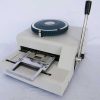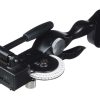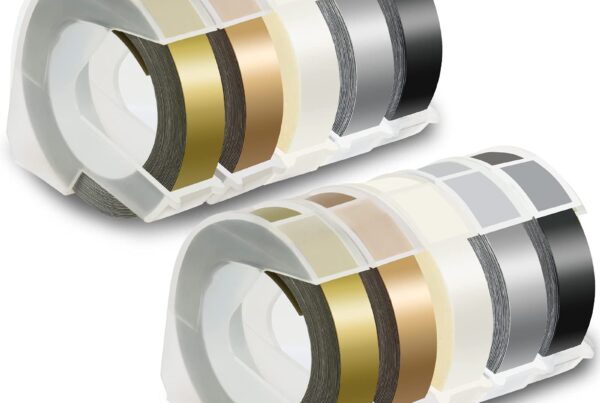In order to understand the deep aspects of embossing metal, we must first go back to the fundamentals and define what metal embossing is in the first place. Let’s look at the definition of this term since it is not often used:
Metal embossing is the process in which a machine stamps metal to create 3D patterns on its surface, such as on a metal embossing tape.
Metal embossing is utilize to make stunning metal works of art since these markings can face inwards or outwards. A traditional method that can be utilize for a variety of things, including creative expression, is embossing.
The Process of Metal Embossing
We can now go into a bit more detail about the procedure now that we are aware of what metal embossing is. Below are the three fundamental points in the procedure:
- Run a sheet of metal into a metal embossing machine to create a metal emboss surface.
- The push roll, which pulls the metal sheet across, the male roller, and the female roller, which stamps the marks, are the three main rolls that make up this device.
- It is possible to alter these rolls to create unique visuals and outcomes.
What Do Embossing vs. Debossing Mean?
We now understand a great deal more about the operation of the metal embossing process, but you may also have heard the word “debossing.” So, what is debossing and how does it differ from embossing? The procedure for embossing and debossing is roughly the same but reverse. On metal, 3D graphics are made by embossing or debossing; the former produces raised 3D designs while the latter indented ones. Both operate in a similar fashion, differing just slightly in terms of look and neither in terms of cost or difficulty.
Embossing or Debossing: Which Is Better?
It is time to draw a conclusion on embossing and debossing because we have learnt a lot about them so far. What process is superior: embossing metal or debossing metal? Basically, it all comes down to the material you are using; for metal, it usually comes down to personal opinion since both methods work just fine. Embossing is more suggest for paper products. Whatever you want and what best meets the requirements of your project will ultimately determine how things turn out.
What Are Some Simple Methods for Metal Embossing?
We have been discussing metal embossing as a leisure and as an intriguing art form, but this begs the question: what are some of the fundamental metal embossing techniques employee to produce these lovely metal pieces?
The methods use for metal embossing have remain remarkably consistent over the years despite being use for centuries. An embossing stamp, a wheel, and a template are require for simple metal embossing. Following the pattern’s stamping onto the metal sheet, emboss metal is produce, which has a 3D relief. This method has not alter much over time because it continues to produce wonderful results. In addition to this, manual embossing methods exist as well.
Metals That Are Used in Embossing Metal
For embossing dies, three different types of metal are utilize. Metal can be chosen base on the image’s shape and the pattern to be made.
- For simple embossing tasks with small runs, magnesium dies are utilize. Large and simple designs are feature. Magnesium also enables the use of unique hand tools.
- The most use embossing dies are brass ones. They are incredibly adaptable and enable the embosser the freedom to produce tiny lines, sculpture pictures, and dual-process embossing and foil stamping. They work great for photographs that need a lot of manual labor as well. Machines or a semi-photographic method can be use to create brass dies. To serve as a sketching guide, the image from the photograph is print onto the die.
- In between magnesium and brass dies, copper dies are employ. Hand tooling is not, however, allow with copper dies.
The metal sheet is drag between male and female roller dies, resulting in a pattern or artwork on the metal sheet. The metal sheet can be pattern in a way base on the roller dies that are use. In order to smooth the picture, pressure and a mixture of heat operate as “irons,” elevating the image’s level above the substrate. In contrast to an image that is lift out of the face of a material, an image that is “impressive” is one that is drop into the face of a material.
How Do You Use Metal Embossing Equipment?
We have talk about embossing as a method up to this point, but we have not yet cover the materials use in this intriguing procedure. Let us examine metal embossing equipment in more detail and how to employ them to produce stunning metal objects.
- Similar to the styluses that painters use to carve desirable forms and shapes into a metal sheet, manual embossing tools are simple and easy to use.
- When using an embossing machine, you must first prepare a design to imprint on the metal, then place the stamp inside the machine, and last run the machine over the require metal item to emboss it.
What Sets Embossed and Engraved Apart?
Engraving is a word that is frequently use while discussing metal. Many people believe that embossing and engraving are comparable, if not quite the same, however, is this really the case? Let’s examine the distinctions between engraving and embossing in more detail. Given that the outcomes of both processes are relatively similar, it is not strange that people compare embossing and engraving. However, there is one significant distinction, and that relates to the method itself. While the process of engraving carves out and scrapes pieces of the material to create the artwork, embossing restores the material into various shapes.
Conclusion
Overall, embossing is a unique process that has been around for a long time to create amazing works of metal art. The details of the embossing method have been cover in this article. We sincerely appreciate your time and hope you enjoy the content.








